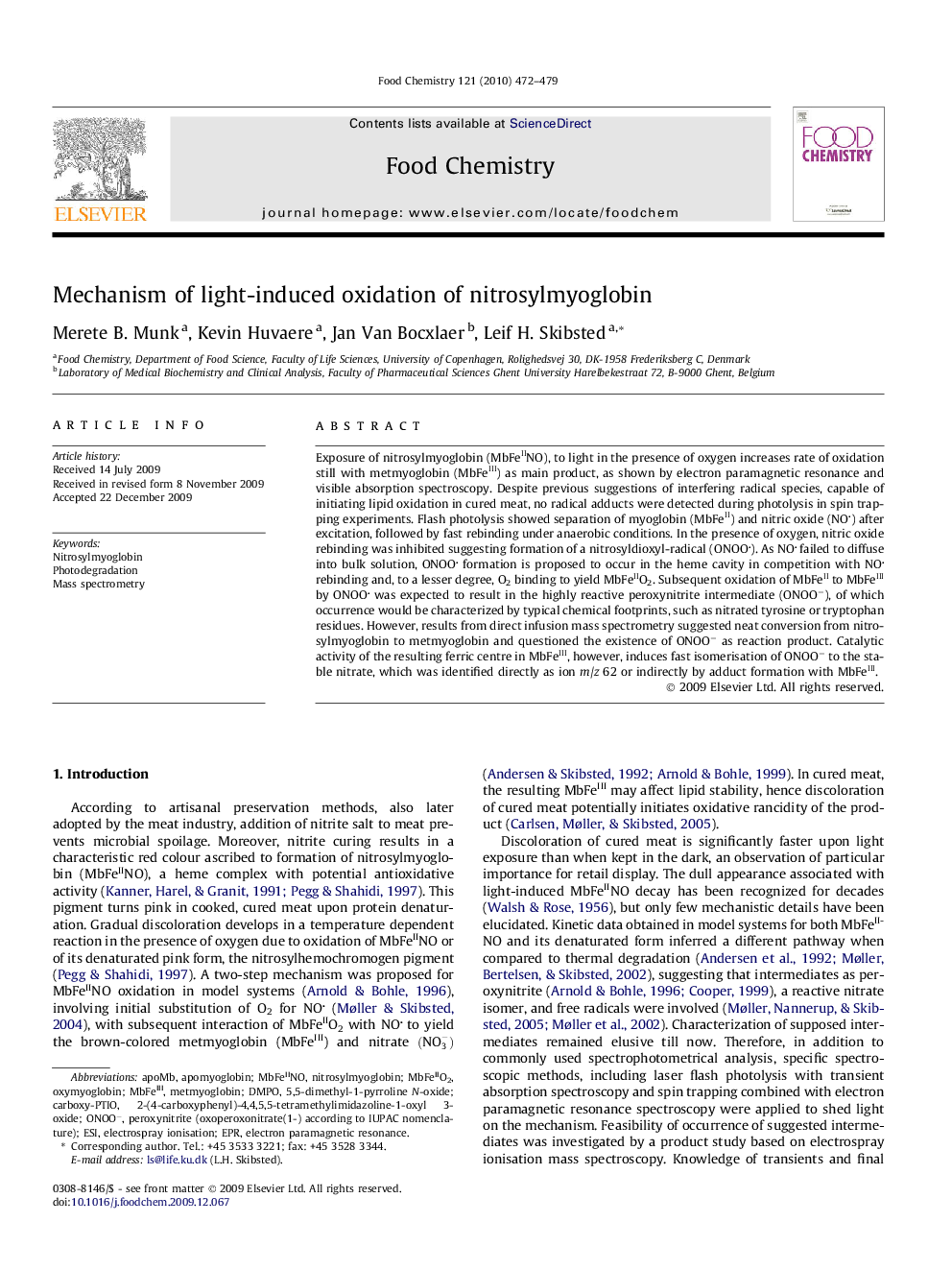| Article ID | Journal | Published Year | Pages | File Type |
|---|---|---|---|---|
| 1186842 | Food Chemistry | 2010 | 8 Pages |
Exposure of nitrosylmyoglobin (MbFeIINO), to light in the presence of oxygen increases rate of oxidation still with metmyoglobin (MbFeIII) as main product, as shown by electron paramagnetic resonance and visible absorption spectroscopy. Despite previous suggestions of interfering radical species, capable of initiating lipid oxidation in cured meat, no radical adducts were detected during photolysis in spin trapping experiments. Flash photolysis showed separation of myoglobin (MbFeII) and nitric oxide (NO) after excitation, followed by fast rebinding under anaerobic conditions. In the presence of oxygen, nitric oxide rebinding was inhibited suggesting formation of a nitrosyldioxyl-radical (ONOO). As NO failed to diffuse into bulk solution, ONOO formation is proposed to occur in the heme cavity in competition with NO rebinding and, to a lesser degree, O2 binding to yield MbFeIIO2. Subsequent oxidation of MbFeII to MbFeIII by ONOO was expected to result in the highly reactive peroxynitrite intermediate (ONOO−), of which occurrence would be characterized by typical chemical footprints, such as nitrated tyrosine or tryptophan residues. However, results from direct infusion mass spectrometry suggested neat conversion from nitrosylmyoglobin to metmyoglobin and questioned the existence of ONOO− as reaction product. Catalytic activity of the resulting ferric centre in MbFeIII, however, induces fast isomerisation of ONOO− to the stable nitrate, which was identified directly as ion m/z 62 or indirectly by adduct formation with MbFeIII.
